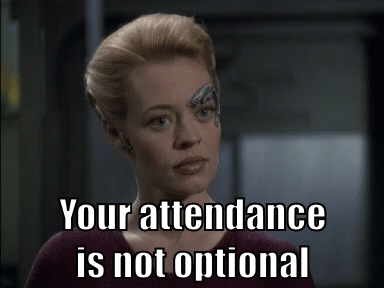Infinite Diversity Infinite Combinations
Andrew B. Harwood
Florida Technical Institute
Abstract
This paper identifies the psychological influence being a child of a Vulcan father and human mother, but being raised on planet Vulcan had on Mr. Spock, the character from Star Trek. This paper researches Spock’s bicultural identity to explore the application of Raymond Cattell’s view on nature versus nurture and intelligence. According to Raymond Cattell, 80% of a human’s intelligence is inherited and 20% is environmentally learned (Cloninger, 2013). By analyzing Spock, this paper will determine if those findings are also accurate for someone who is of partial human heritage but raised exclusively Vulcan.
Keywords:Spock, Cattell, intelligence, traits, nature, nurture, learning
Introduction
Nature vs Nurture is the debate about what is more important: what you inherit biologically from your parents or what you learn from your environment. Raymond Cattell broke this question down and found that traits can help predict behavior. Cattell (1979, p. 14) defined traits as “that which defines what a person will do when faced with a defined situation.” He broke this concept down even further when he identified three types of traits and three ways to find them.
Cattell utilized Q-Data, T-Data, and L-Data to identify traits. Q-Data are the result of questionnaires and self-report tests and is the most common way personality theorists receive their data. Cattell found issues with this process because “respondents may attempt to present a certain image to the administrator or their conscious self-understanding may be different from their true underlying personality” (Cloninger, 2013). T-Data or “objective test data” (Cloninger, 2013) are self-reports that cannot be faked because the participant does not know the purpose of the test or how their answers fit into the research. Lastly, L-Data, or “life record data” (Cloninger, 2013) is information that can be obtained from factual records and thus does not require a self-report questionnaire (Cloninger, 2013).
From these data types, Cattell was able to find evidence of three types of traits: ability traits, temperament traits, and dynamic traits. Ability traits measure intelligence. Early intelligence tests were biased towards people who received good education. Cattell wanted his intelligence tests to be unbiased, so he separated intelligence into two categories. The first is fluid intelligence described as “the innate ability to learn” (Cloninger, 2013). This intelligence is classified as hereditary. The second is crystallized intelligence which measures “what has been learned” and has been classified as environmental (Cloninger, 2013). In order to determine how each intelligence category drives behavior, he created the Culture Fair Intelligence Test. It concluded 80% of intelligence is fluid/hereditary and only 20% is environmentally learned.
The second type is temperament traits. The temperament of a person “determines the general style and tempo with which a person carries out what he/she does” (Cattell, 1965, p. 165). Temperament has become a larger area of study throughout the years and shows “how biological influences play a role in shaping personality” (e.g., Bates & Wachs, 1994; Kagan, 1994).
Lastly “dynamic traits are motivational” (Cloninger, 2013). Cattell divided this trait into two: ergs and metaergs. Ergs are innate and genetically inherited, whereas metaergs are learned from the environment (Cloninger, 2013).
Every human exhibits these three trait types, but what about someone who is only half human? Spock, the half-Vulcan half-human character from Star Trek is one such person.
Vulcans
In order to understand Spock’s traits, one must first understand biology and psychology of the Vulcan race. The Vulcan limbic system is incredibly fast and efficient, which causes more intense emotions (Starfleet Medical Reference Manual, 1977). Surak, a Vulcan who lived over one thousand years ago, created the idea that logic is more important than emotions. This became the essence of Vulcan culture. Surak’s most important teaching is represented by a symbol called the IDIC. It is a circle with a triangle coming out of the center with a red jewel at the top of the triangle. This image represents a sun coming over Mount Selaya. Mount Selaya is the most sacred place on Vulcan and houses many of the most renown priests and priestesses in Vulcan culture. IDIC comes from the initials of Surak’s original phrase, “Infinite Diversity in Infinite Combinations.” This philosophy is explained in the Star Trek: The Original Series (ST: TOS) episode ‘Is There In Truth No Beauty?’ during the following passage:
MIRANDA: I understand Mr. Spock. The glory of creation is in its infinite diversity.
SPOCK: and the way our differences combine to create meaning and beauty.
-Is There in Truth No Beauty? ST: TOS Season 3 Episode 5
Spock on Vulcan
Spock is the only Vulcan-Human hybrid on planet Vulcan. As Dr. Ali M. Mattu explains in his article, ‘Psychology of Spock: Past, Present, Future’, “By allowing him to independently explore his identity they increased the chances of Spock integrating both cultures. This type of parenting is a core component in resilience - the psychological factor that keeps kids healthy despite chronic stressors like constant discrimination…” Spock’s half-human half-Vulcan heritage caused him to be isolated from all other students and resulted in bullying, which is demonstrated in the 2009 movie Star Trek.
SPOCK: This is your thirty-fifth attempt to elicit an emotional response from me.
BULLY 1: You’re neither human nor Vulcan and therefore have no place in this universe.
BULLY 2: Look, his human eyes, they look sad don’t they? BULLY 1: Perhaps an emotional response requires physical stimuli. -pushes Spock backwards- He’s a traitor you know. Your father? For marrying her, that human whore.
SPOCK: -Beats up bully-
-Star Trek, 2009
Spock’s parents put faith in him, in turn he was comfortable with himself and his heritage. But because he felt love toward his parents, and having a combination of the Vulcan limbic system and the reactions of humans, it was the bullies’ insult to his parents that offended Spock, instead of their insults to Spock himself, which evidently had happened thirty-four times prior to this scene. After this scene Spock’s father, Sarek, gives Spock advice on how to proceed in his life.
SAREK: Logic offers us a serenity that humans seldom experience. The control of feelings, so that they do not control you.
SPOCK: You suggest that I be completely Vulcan, and yet you married a human.
SAREK: As ambassador to Earth it is my duty to observe an understand human behavior. Marrying your mother was…logical. Spock, you are fully capable of deciding your own destiny. The question you face is: which path will you choose? This is something only you can decide.
-Star Trek, 2009
Spock proceeded to numb himself to human emotions. He dedicated himself to becoming Vulcan but did so only to fit in with his classmates, not because he agreed. This is proven when he asks his mother if he should complete Kolinahr, a ritual that purges a Vulcan of all emotion. Just as she did during his young childhood, she told him, “Whatever you choose to be, you will have a proud mother” (2009). The following passage shows his last moments fully dedicated to the Vulcan way of life, because the Head Minister insulted his heritage. From this moment on, he was proud to be Vulcan, but began to take part in human culture and the culture of Starfleet.
VULCAN HEAD MINISTER: You are hereby accepted to the Vulcan Science Academy. It is truly remarkable Spock that you have achieved so much, despite your disadvantage.
SPOCK: If you could clarify minister, to what disadvantage are you referring?
VULCAN HEAD MINISTER: Your human mother.
SPOCK: Council, ministers, I must decline.
-Star Trek, 2009
Spock in Starfleet
Spock used his training of emotional control to become the best officer in Starfleet. Combining the mental control of a Vulcan and the creative flexibility of a human gave him the unique ability to determine if someone is being fully logical or blinded by emotion. His fast limbic system, inherited from his father, and his flexible human mind, inherited from his mother, enabled him to be a naturally fast, creative thinker. The logical thinking and emotional control he learned from the Vulcan culture enabled him to apply creative thinking to problem solving. As Sarek pointed out to Spock, Vulcans are not born logical, they learn to value logic over emotion.
As a young Commander, Spock was still trying to find a balance for emotion and logic. Spock, while played by Leonard Nimoy, had already succeeded in combining the values of each culture he came from. However, in the 2009 prequel Star Trek, we see the pivotal moment that allowed him the clarity to understand how to integrate the cultures. The moment that his father gave him permission to feel.
SPOCK: I feel anger toward the person who took mother’s life. An anger I cannot control.
SAREK: I believe as she would say, ‘do not try to.’ You asked me once why I married your mother. I married her because I loved her.
-Star Trek, 2009
Immediately after this scene, Spock used his anger to motivate himself to let go of the need to control the situation and instead worked to save his mother’s home. The resilience he learned from his mother, of surviving in an environment where he is different from everyone else, and the culmination of every life lesson learned from his father, shaped his destiny in the original Star Trek universe, as well as the parallel universe, to become “the most influential officer in Starfleet” (Mattu, 2013).
The Big Five and Spock
Cattell’s original personality theory consisted of 16 positive and negative traits. Modern psychologists have reduced this list to encompass five factors that are now known as “The Big Five Factors of Personality” (Cloninger, 2013). Instead of listing positive and negative traits, the five factors are scored high or low and determine the traits a subject exhibit in regards to that particular factor. Table 1 shows each factor with a corresponding high and low score description. The Big 5 Factors are Extraversion, Agreeableness, Neuroticism, Conscientiousness, and Openness. This table is taken from (Cloninger, 2013) which was adapted from McCrae 1990, p. 402; and McCrae, Costa, & Piedmont, 1993.
Modern society commonly uses the labels “extrovert” and “introvert” to describe themselves and their friends. To today’s population extrovert is a synonym for social, whereas introvert is a synonym for withdrawn and antisocial. These terms describe the high score and low scores of the factor Extraversion. A high scorer in Extraversion has more intimate relationships, more interactions, and overall has a good time with life. A low scorer in Extraversion are less likely to fall in love or be intimate with another person, and avoid emotionally charged situations (Cloninger, 2013).
Agreeableness is referred to as ‘Likability’ (textbook; John, 1990). People who score high in Agreeableness have the values of “being helpful, forgiving, and loving” (Dollinger, Leong, & Ulicni, 1996). “They report little conflict in their personal relationships and when conflict occurs, it reduces their self-esteem” (Barret & Pietromonaco, 1997).
“Neuroticism describes people who frequently are troubled by negative emotions such as worry and insecurity” (McCrae & Costa, 1987). People scoring high in neuroticism are commonly unsatisfied with their lives and have a difficult time being in a committed relationship. These emotions aren’t always harmful, however, because some people channel it to be self-protective. People scoring low on the Neuroticism scale have a tight grasp on their emotions and are able to control themselves in emotionally charged situations, more than a high scorer would have the ability of doing.
Conscientiousness also called “Dependability, Impulse Control, and Will to Achieve”(John, 1990) describes a person’s self-discipline. High scorers are ambitious, good students, and are highly motivated to achieve. High scorers are also more likely to be satisfied in their job and feel secure within themselves. They also have incredibly high self-esteem when they are succeeding, and only feel low self-esteem when they fail. Low scorers do not feel motivated within themselves and need to have an outward source driving them to succeed but do not care whether they succeed or not.
Modern psychologists have given the factor Openness multiple names in order to find a better way to explain the term. The alternate names, and how psychologists try to explain the term, are “Culture, Intellect, Intellectual Interests, Intelligence, and Imagination” (John, 1990; Sneed, McCrae & Funder, 1998). A high score in openness produces values of imagination and being broadminded, whereas respondents with low scores in openness value obedience, discipline, and security (Dollinger, Leong, & Ulicini 1996).
Table 2 shows a table comparing humans, Vulcans, and Spock in relation to the Big Five Factors. Spock’s labels are cross-referenced to a quote appearing below supporting each rating. Table 2 shows that for 3 out of the 5 traits, Spock acted consistently with Humans, something he inherited from his mother. The two traits not consistent with human responses, were a combination of Vulcan practice and Human emotion.
Conclusion
Traits in humans come from genetics and how a person is raised. Cattell’s personality and learning theories show that nature/nurture ratio is 80/20. This examination of Spock is consistent with that theory. Although Cattell’s theory was made for humans, this psychobiography shows it is consistent with Vulcans, something Spock would call “fascinating” (Star Trek: The Original Series).
References
Abrams, J. J., Lindelof, D. (Producers), & Abrams, J. J. (Director). (2009). Star Trek [Motion
Picture]. United States: Paramount Pictures.
Abrams, J. J., Burk, B., Lindelof, D., Kurtzman, A., & Orci, R. (Producers), & Abrams, J. J. (Director). (2012). Star Trek: Into Darkness [Motion Picture]. United States: Paramount
Pictures.
Barret, L. F., & Pietromonaco, P. R. (1997). Accuracy of the five-factor model in predicting perceptions of daily social interactions. Personality and Social Psychology Bulletin, 23, 1173-1187.
Cattell, R. B. (1965). The scientific analysis of personality. Baltimore, MD: Penguin.
Cattell, R. B. (1979). Personality and learning theory: Vol. 1. The structure of personality in its environment. New York: Springer-Verlag.
Cloninger, S. C. (2013). Theories of Personality: Understanding Persons (6th. ed).Singapore:
Pearson Education.
Dollinger, S. J., Leong, F .T. L., & Ulicni, S. K. (1996). On traits and values: With special reference to openness to experience. Journal of Research in Personality, 30, 23-41.
John, O. P. (1990). The “Big Five” factor taxonomy: Dimensions of personality in the natural language and in questionnaires. In L. A. Pervin (Ed.), Handbook of personality: Theory and research (pp. 66-100). New York: Guilford.
Kagan, J. (1994). Galen’s prophecy: Temperament in human nature. New York: Westview Press.
Mattu, A. (2013, July 18). The Psychology of Spock: Past, Present, Future. Brain knows better. Retrieved June 8, 2016, from brainknowsbetter.com/news/2013/7/18/the-psychology-ofspock-past-present-future
McCrae, R. R. (1990). Traits and trait names: Howe well is openness represented in natural languages? European Journal of Personality, 4, 119-129.
McCrae, R. R., & Costa, P. T., Jr. (1987). Validation of the five-factor model of personality across instruments and observers. Journal of Personality and Social Psychology, 52, 81-
90.
McCrae, R. R., Costa, P. T., Jr., & Piedmont, R. L. (1993). Folk concepts, natural language, and psychological constructs: The California Psychological Inventory and the five-factor model. Journal of Personality, 61, 1-26.
Nimoy, L. (2015). I Am Spock. Hatchette Books.
Roddenberry, G. (Executive Producer). (1966-1969). Star Trek: The Original Series [Television
Series]. Los Angeles: Paramount Television.
Sneed, C. D., McCrae, R. R., & Funder, D. C. (1998). Lay conceptions of the five-factor model and its indicators. Personality and Social Psychology Bulletin, 24, 115-126.
Starfleet Medical Reference Manual. (1977). Ballantine Books.
Tables
Table 1
Factor | Description of High Scorer | Description of Low Scorer |
Extraversion (E) | Talkative Dominant Sociable | Quiet Unfeeling Passive |
Agreeableness (A) | Good-natured Soft-hearted Trusting | Irritable Ruthless Suspicious |
Neuroticism (N) | Emotional Vulnerable Anxious | Calm Self-Controlled Sense of well-being |
Conscientiousness (C) | Hardworking Ambitious Responsible | Negligent Lazy Irresponsible |
Openness (O) | Creative Imaginative Prefers variety | Uncreative Down to earth Prefers routine |
Table 2
Factor Human Spock Vulcan
Extraversion | HIGH | HIGH McCoy: I knew it was a risk to reconnect his mouth. -Star Trek: The Original Series, Season 3 Episode 1. | LOW |
Agreeableness | LOW | LOW Spock: I’d prefer to discuss this in private. Uhura: You’d prefer not to discuss this at all.-Star Trek: Into Darkness (2012) | HIGH |
Neurotic | HIGH | NEUTRAL Spock: Nayota, you mistake my choice not to feel as a reflection of my not caring. While I assure you, the truth is precisely the opposite. -Star Trek: Into Darkness (2012) | LOW |
Conscientious Openness | HIGH | HIGH Kirk: You’ve been called the best first officer in the fleet. -Star Trek: The Original Series, Season 2, Episode 1 | HIGH |
HIGH | NEUTRAL Spock: I examined the problem from all angles and it was plainly hopeless. Logic informed me that under the circumstances the only possible action would have to be one of desperation. A logical decision, logically arrived at. Kirk: You reasoned it was time for an emotional outburst -Star Trek: The Original Series, Season 1 Episode 16 | LOW |











































